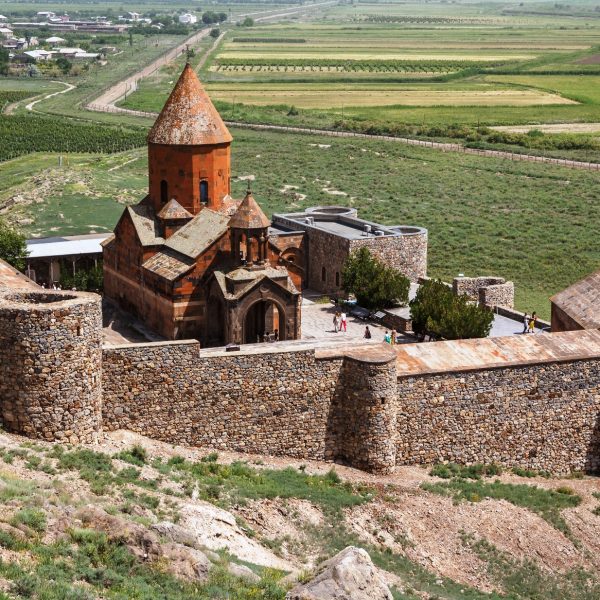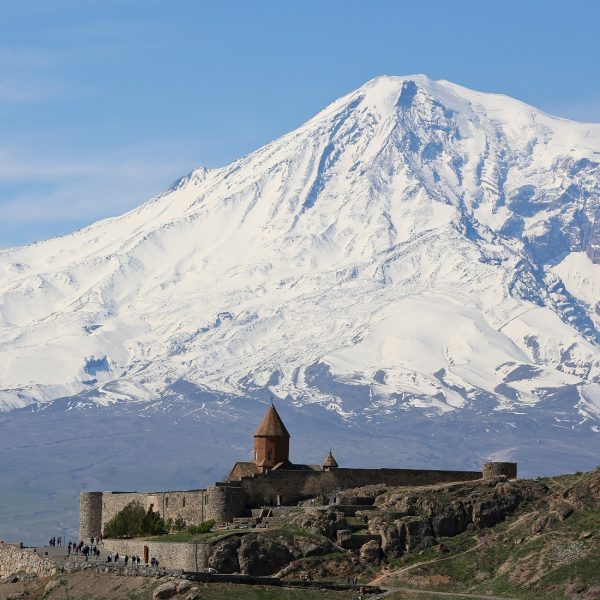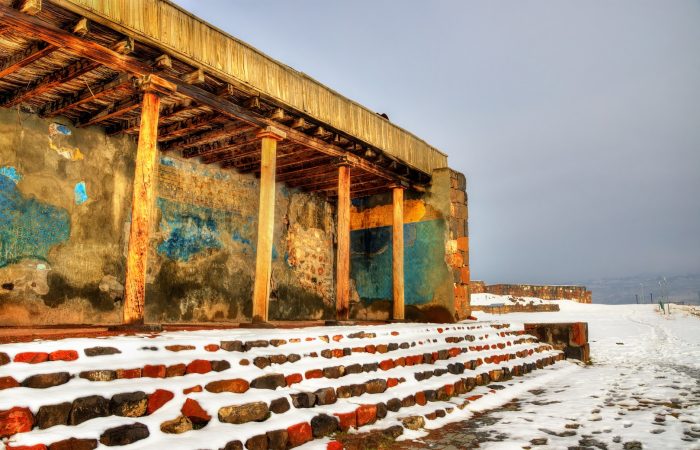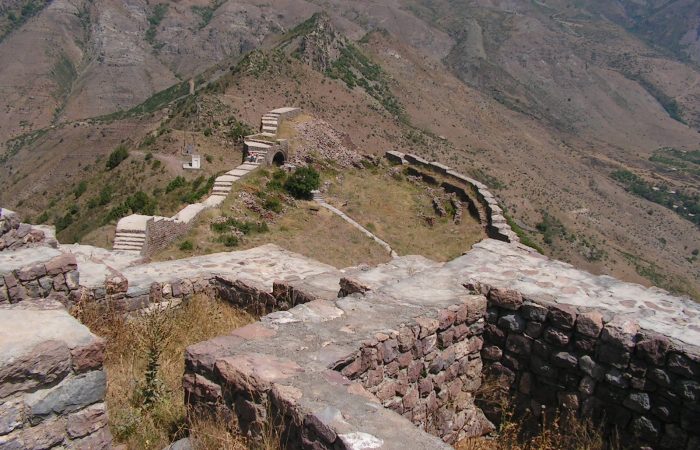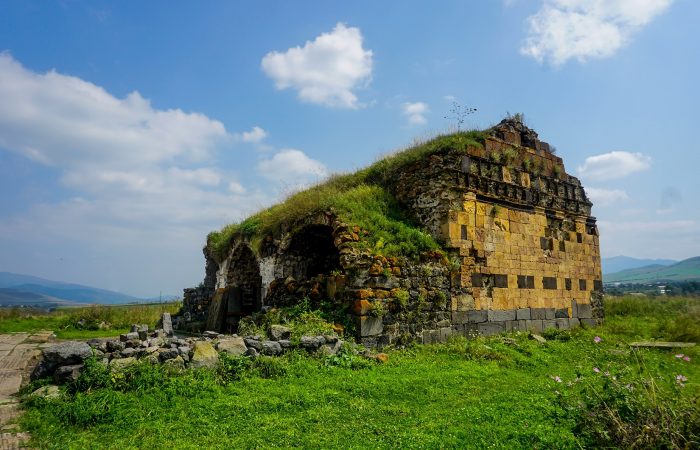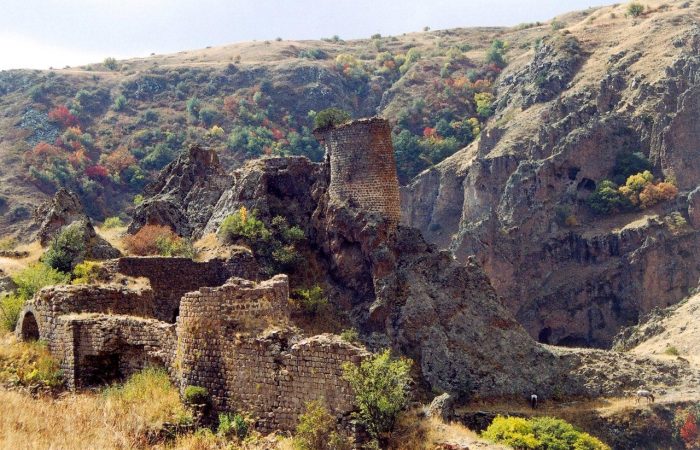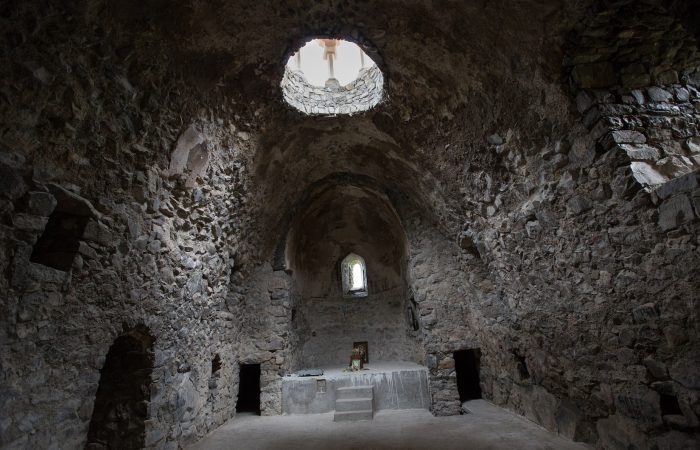Brief Account of City of Artashat
Artashat was established in 189-188 BC by King Artashes I who also founded the dynasty of Artashesyans. He was the king to reunite the Armenian lands and to make reforms in the economic, military, cultural and political spheres.
According to excavations, the city of Artashat was founded in the place of an Urartian city, the name of which remains unknown up to the present day. There are different assumptions as to how and why the city was built exactly in that place. Some historians (Plutarch, Strabo) claim Artashes I chose that place upon the advice of leading Carthaginian commander Hannibal, while others (Movses Khorenatsi/Moses of Khorene) claim it was the sole decision of Artashes I.
Artashat was the capital of Greater Armenia (Mets Hayk) for 600 years and it remained the country’s political, economic and cultural center until 364-369, that is until Shapuh II destroyed the city and captured the city’s population
Khor Virap: General
Khor Virap monastery was built in Artashat, and was never less popular than the city of Artashat. It became even more popular due to the life and activities of Gregory the Illuminator, the first Catholicos of all Armenians. The story regarding his suffering and imprisonment in Khor Virap, which means deep pit or well in English, coincides with the period Christianity was adopted as state religion in Armenia.
Khor Virap: History
After the Sassanids came to power in Persia in the third century, they murdered the members of the Parthian Royal Family and entered Armenia where they had to face strong resistance by King Khosrov the Great, who came from the dynasty of Armenian branch of Parthian Arshakunis. According to historical account, King Khosrov was murdered by Prince Anak who was Khosrov’s remote kinsman and was sent by the Sassanids. While fleeing Anak and his brothers got drowned in the waters of Araks river, and his family was killed. Anak’s two sons one of which was Grigor (who later became Gregory the Illuminator) remained alive and were taken to Caesarea.
Khosrov’s only son Tiridates was raised in the Roman Empire. Already an adult, he returned to Armenia in 287 and with the help of Roman and Armenian forces threw the Sassanids out of Armenia. It’s during those years that Grigor who had received Christian education in Caesarea came to serve Tiridates. According to Armenian historians, during a pagan rite Tiridates ordered Grigor to place a wreath at the statue of Goddess Anahit, which Grigor refused to do. This caused the rage of Tiridates who also learning about Grigor’s being Anak’s son threw him into a deep pit, which was full of snakes and poisonous insects and which used to serve as a dungeon.
In the third century there lived in Rome a group of 300 Christian virgins headed by virgin Gayane. During the reign of Diokghetianos (Emperor Diocletian) the virgins were persecuted. To avoid persecution they came to Armenia. Captivated by the beauty of Gayane, one of the virgins, Tiridates wanted to make her his wife. The virgin refused and Tiridates, enraged by that, ordered to kill the virgins. Afterward, Tiridates went out of his mind. The king’s sister Khosrovadukht had one and the same dream for several times in which it was made clear to her that the King could be cured only by Grigor who was imprisoned in the dungeon. Princes were sent to Artashat to see if Grigor was alive, though it seemed absolutely unbelievable he would remain alive having been locked there for thirteen years. To their great surprise, he was, and Grigor was taken to the then capital Vagharshapat, where he granted absolution to King Tiridates. Being cured from the disease Tiridates adopted Christianity. Three and a half centuries later, in the 7th century a church was built in the place where Tiridates the Great and Gregory the Illuminator met. The church was named Saint Grigor and is also known as Zvartnots.
As already said, Christianity was adopted as state religion in 301. A century later, in 405 Mesrop Mashtots invented the Armenian alphabet. The adoption of Christianity as well as the invention of the Armenian alphabet, eventually predicted the future of Armenians causing every foreign attempt to annex Armenia or to destroy it simply to fail.
Khor Virap: Saint Astvatsatsin Church
Saint Astvatsatsin or Holy Mother Church is the main building of Khor Virap Armenian Apostolic Church Monastery. It belongs to the domed hall type and was built in the 17th century. The church has greatly suffered from various earthquakes, with the most disastrous one being the earthquake of 1679. The church was repaired in 1703, and later in 1970-1980.
Unlike the medieval Armenian churches that came with cruciform central domed layouts, Saint Astvatsatsin Church represents a domed hall with two annexes on both sides of the apse. Adjacent to the church, on the western side there is a belfry built in the 19th century.
Note to the visitors: Saint Astvatsatsin is an operating church and therefore the rules set by the Armenian Apostolic church should be followed, especially when attending service; women should wear head scarves, and men should take off their hats or caps.
Khor Virap and Saint Gevorg Church
According to Hovhannes Draskhanakertsi (Catholicos of Armenia from 897 to 925), Armenian Catholicos Nerses III the Builder (641-661) built a chapel to the south-west of the pit/well where Gregory the Illuminator was imprisoned for 13 years. The current building dates to the 642.
As to the pit, it is 6 meters deep. And it is believed Gregory the Illuminator remained alive due to a kind woman who used to daily give him water and bread, which she lowered through a small hole.
In the vicinity of the monastery there are the Memorial Museum and the home of Paruyr Sevak, one of the most beloved and famous Armenian poets who died tragically in a car accident in the communist era.


